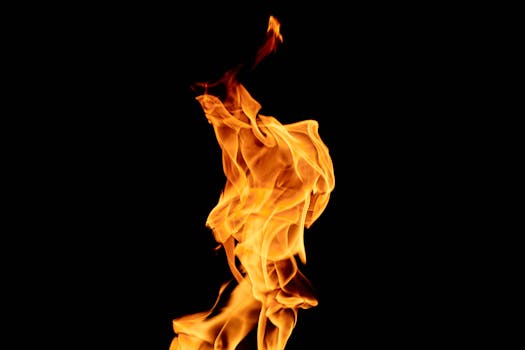+17162654855
+17162654855
DMV Publication News serves as an authoritative platform for delivering the latest industry updates, research insights, and significant developments across various sectors. Our news articles provide a comprehensive view of market trends, key findings, and groundbreaking initiatives, ensuring businesses and professionals stay ahead in a competitive landscape.
The News section on DMV Publication News highlights major industry events such as product launches, market expansions, mergers and acquisitions, financial reports, and strategic collaborations. This dedicated space allows businesses to gain valuable insights into evolving market dynamics, empowering them to make informed decisions.
At DMV Publication News, we cover a diverse range of industries, including Healthcare, Automotive, Utilities, Materials, Chemicals, Energy, Telecommunications, Technology, Financials, and Consumer Goods. Our mission is to ensure that professionals across these sectors have access to high-quality, data-driven news that shapes their industry’s future.
By featuring key industry updates and expert insights, DMV Publication News enhances brand visibility, credibility, and engagement for businesses worldwide. Whether it's the latest technological breakthrough or emerging market opportunities, our platform serves as a bridge between industry leaders, stakeholders, and decision-makers.
Stay informed with DMV Publication News – your trusted source for impactful industry news.
Energy

**
With temperatures soaring near 50°C (122°F) across [mention specific region/country experiencing heatwave], many are grappling with the dangers of extreme heat. This isn't just about discomfort; heatwaves pose serious health risks, leading to heat exhaustion, heatstroke, and even death. Staying safe requires proactive measures. This article offers six evidence-based strategies to help you beat the heat and protect yourself during this intense heatwave.
Before diving into coping mechanisms, it's crucial to understand the severity of extreme heat. Symptoms of heat exhaustion include heavy sweating, weakness, dizziness, headache, nausea, and muscle cramps. Heatstroke, a life-threatening condition, involves a high body temperature (above 40°C or 104°F), confusion, seizures, and loss of consciousness. Heatstroke requires immediate medical attention. Vulnerable populations, including the elderly, infants, young children, and individuals with chronic illnesses, are particularly at risk. Knowing the signs and acting promptly is essential for preventing serious complications. Search for "heat exhaustion symptoms" or "heatstroke symptoms" online for more detailed information and images.
This section outlines six effective strategies for staying cool and safe during extreme heat:
Proper hydration is paramount. Don't wait until you feel thirsty; thirst is already a sign of dehydration. Drink plenty of water throughout the day, even if you're not physically active. Electrolyte drinks can be beneficial, especially after strenuous activity, to replenish lost salts. Avoid excessive caffeine and alcohol, as these can dehydrate you further. Carry a reusable water bottle and refill it regularly. Consider adding electrolytes like those in coconut water or sports drinks to help you stay hydrated and replenish vital minerals lost through sweat. Search for "best hydration tips for hot weather" or "electrolyte drinks for heat" for additional guidance.
Limit your time outdoors, especially during the hottest parts of the day (typically between 10 a.m. and 4 p.m.). Seek shade whenever possible, utilizing trees, awnings, or umbrellas. If you must be outdoors, wear a wide-brimmed hat and sunglasses to protect yourself from the sun's harmful rays. When indoors, utilize air conditioning whenever available. If air conditioning isn't an option, try cooling your home by closing blinds and curtains during the day to block out sunlight, and opening windows at night when temperatures are cooler. Consider "ways to cool your house without AC" for additional options.
Wear light-colored, loose-fitting clothing made of breathable fabrics like cotton or linen. Dark colors absorb more heat, while loose clothing allows for better air circulation. Avoid tight-fitting clothing that can restrict airflow and trap heat against your skin. Remember, “what to wear in extreme heat” is an important search query to consider.
Taking cool showers or baths can help lower your body temperature quickly. If you don't have access to a shower, a cool sponge bath can also be effective. A lukewarm (not cold) bath can help reduce your core body temperature. Look up “cool down techniques in extreme heat” for more useful tips and tricks.
Pay close attention to your body's signals. If you experience any symptoms of heat exhaustion or heatstroke, seek immediate medical attention. Regularly check the heat index, which takes into account both temperature and humidity, to understand the actual perceived temperature. This information is crucial in planning your activities and avoiding risky outdoor exposures. Websites and weather apps frequently provide heat index information and "heatwave safety tips."
During a heatwave, it's vital to check on vulnerable individuals in your community, such as elderly neighbors, those living alone, or people with pre-existing health conditions. Offer assistance with errands, hydration, and ensure they have access to cool spaces. A simple check-in can make a significant difference in preventing heat-related illnesses. This extends to pets; never leave your pets unattended in parked vehicles.
Surviving a 50°C heatwave requires a multifaceted approach. By following these six strategies – staying hydrated, seeking shade, dressing appropriately, cooling down regularly, monitoring your health, and looking out for others – you can significantly reduce your risk of heat-related illness. Remember, prevention is key. Stay informed, take precautions, and prioritize your well-being during this period of extreme heat. Remember to always check reputable sources for the latest weather updates and heatwave advisories.